| Philodina megalotrocha, swimming specimen, dorsoventral view. A species with a characteristic barrel-shaped trunk that is distinct from the cylinder-shaped foot. Sulcus is very wide (sulcus width ≥ width of trochal disc). The orange eyespots are clearly visible (2). |
| |
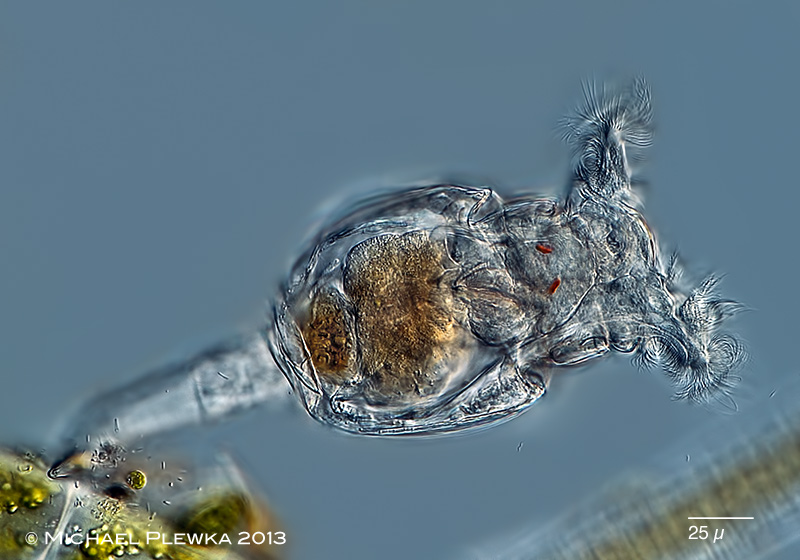 |
| Philodina megalotrocha, whirling, another specimen from the same location as above, while attached to filamentuous algae. The rotifer uses the corona also for swimming. (2). |
| |
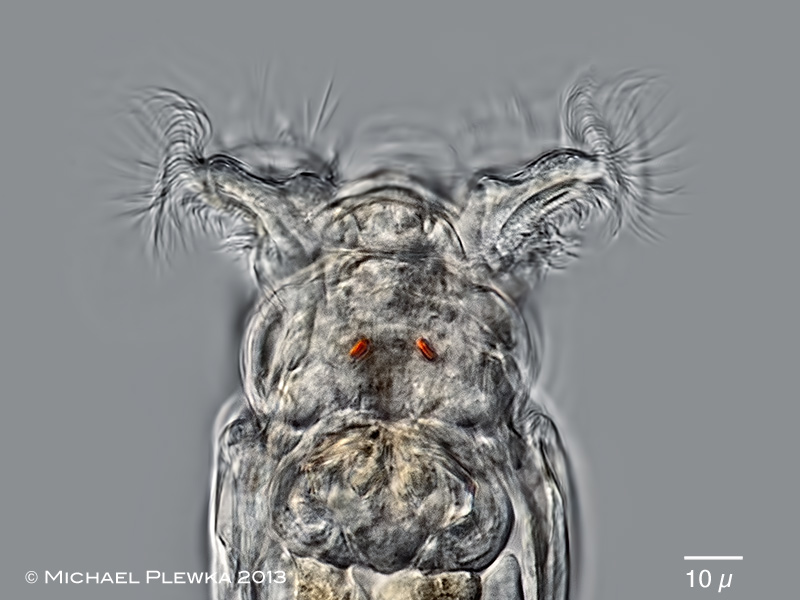 |
| Philodina megalotrocha, head while whirling, dorsoventral view; focus plane on the upper lip and the red eyespots. (2) |
| |
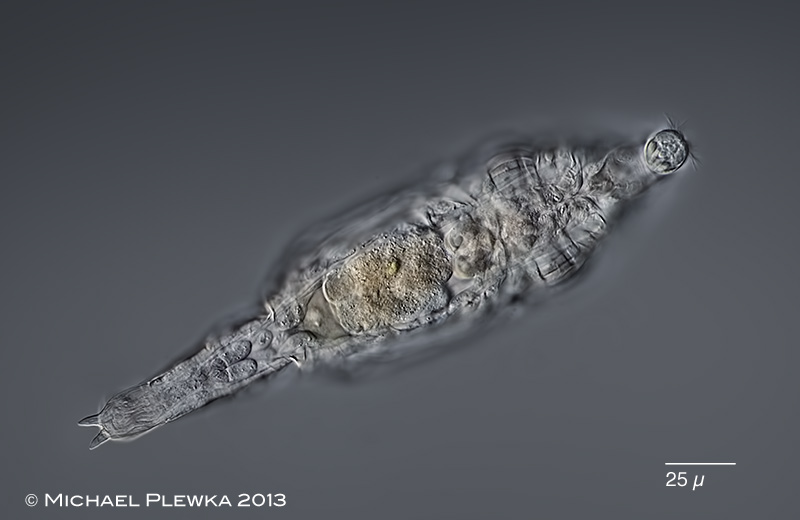 |
| Philodina megalotrocha, creeping, ventral view showing the rostrum (2). |
| |
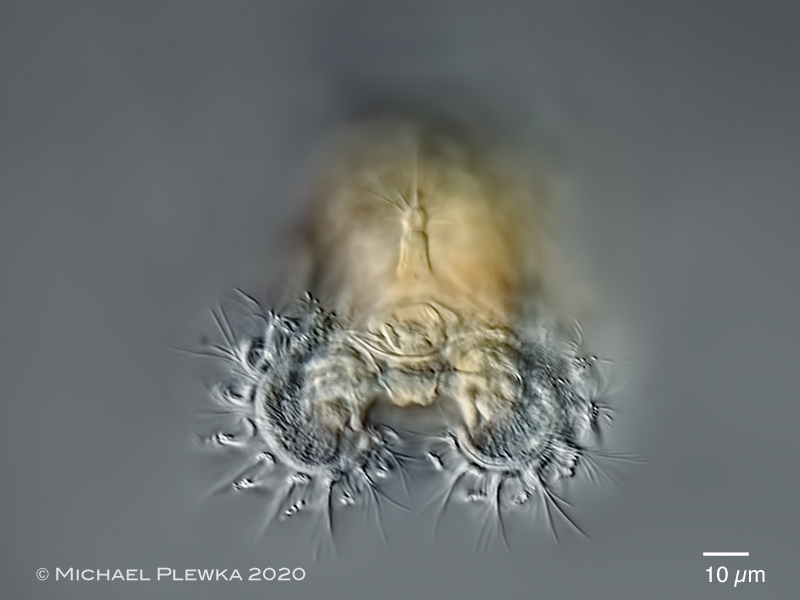 |
| Philodina megalotrocha, frontal view of specimen from (4), showing the upper lip |
| |
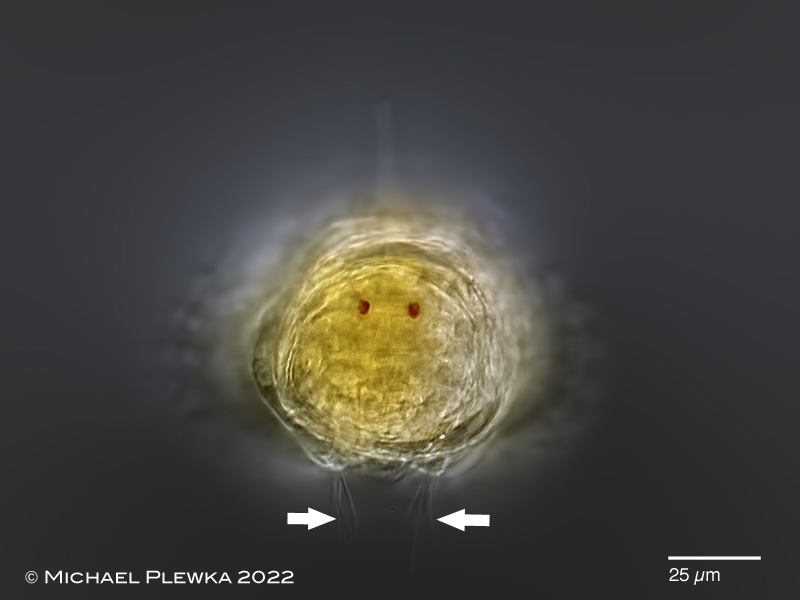 |
| Philodina megalotrocha, optical transect; in this frontal view the eyespots appear (nearly) circular. The arrows point to some long bristles at the end of the cingulum which are also visble in the next image (arrow)(5) |
| |
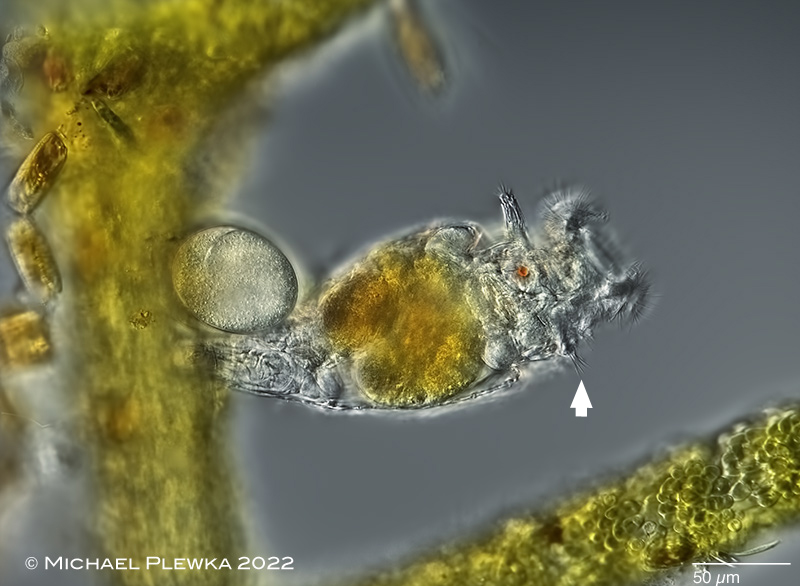 |
| Philodina megalotrocha, specimen with egg on the rhodophyte Torularia atra, whirling, lateral view.The arrows point to some long bristles at the end of the cingulum which are also visble in the previous image (arrows) (6) |
| |
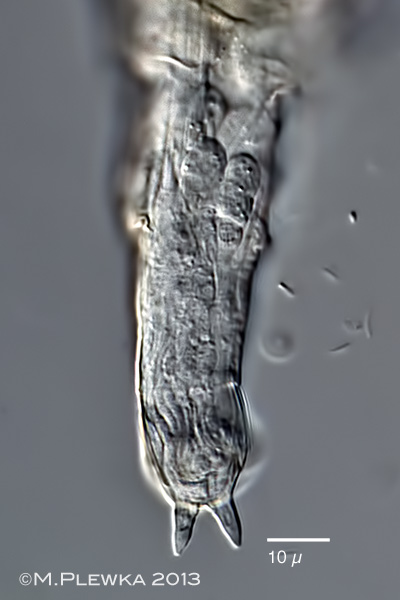 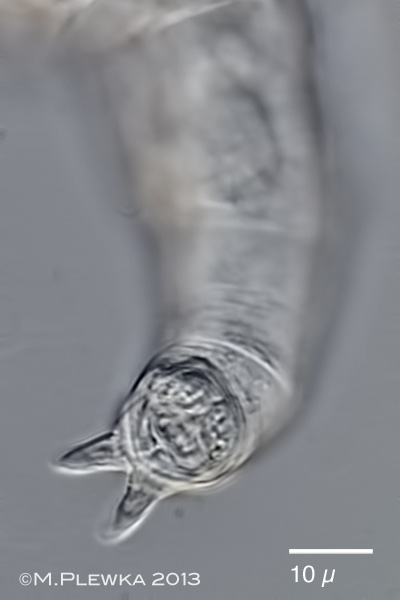 |
| Philodina megalotrocha, two aspects of the foot of creeping specimen. Left: foot with spurs, dorsal view Right: ventral view; focal plane on the 4 toes (spurs are also visible) .(3) |
| |
| |
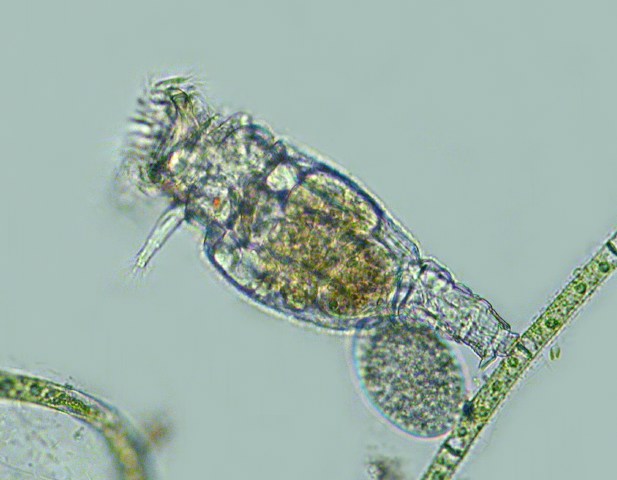 |
| Philodina megalotrocha, lateral view of a specimen with an egg. Like most Philodina-species also P. megalotrocha is oviparous. A characteristic behavior of P. megalotrocha is that the eggs are attached to filamentous alge like the Mougeotia sp. here. The current created by the cilia of the trochal discs brings fresh water to the egg; so this is some sort of parental care (1). |
| |
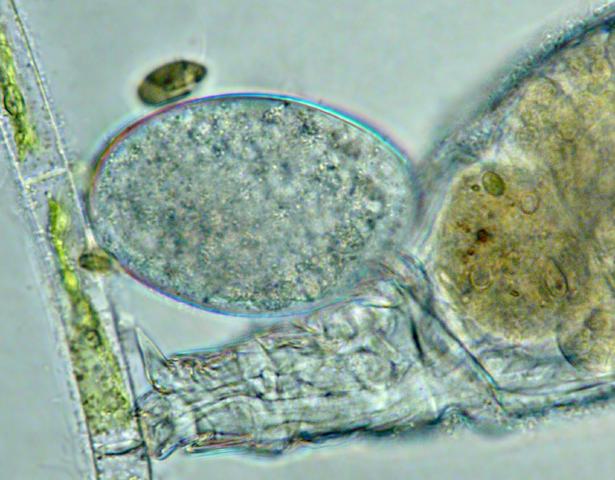 |
| Philodina megalotrocha, foot with toes and egg (1). |
| |
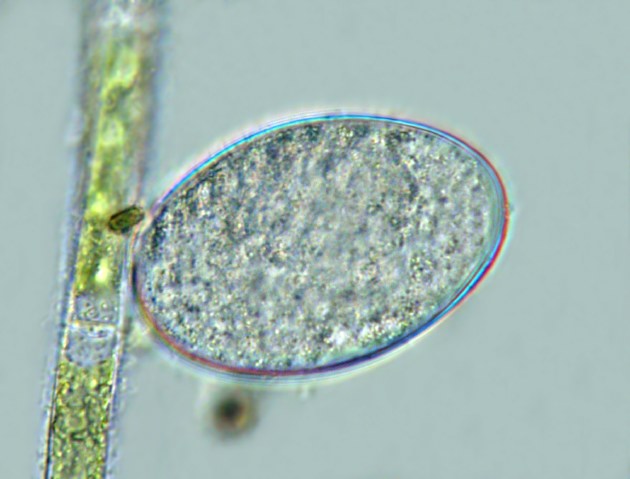 |
| Philodina megalotrocha, egg (1) . |
| |
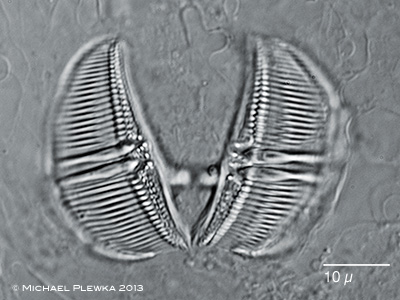 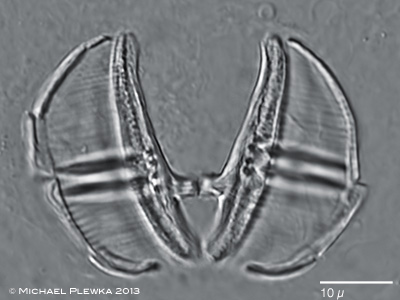 |
| Philodina megalotrocha, ramate trophi. Left: cephalic view; with dental formula (DF):2/2. Right: caudal view; ramus length (RaL): 32µm. Images not to scale. (3) |
| |
| |
| |
| Location: Gevelsberg, Green Classroom, pond (1); Passo di Lavazè (1800m), Trentino, Italia, lake (2), Anhausen, Bavaria, fishponds (3); Gwell Kaer, Brittany, France; creek (4) |
| Habitat: Periphyton (1); Periphyton with Fragilaria sp., Spirogyra sp., Desmidium swartzii, Diatoms, together with Otostephanos donneri and Cephalodella paxi (2); Periphyton (3); (4) |
| Date: 2..9.2005 (1); coll.: 28.09.2013; img.: 03.10.2013) (2); coll.: 29.9.2013, img 3.10.2013 (3); 22.08.2020 (4) |
| |
|
Location (1); (2): Wupper near Müngstener Brücke; |
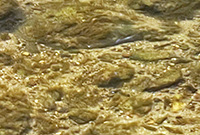 |
| |
| Habitat (1); (2): epibiontic on the red alga Torularia atra in lotic water |
| |
| Date : 18.07.2022 (5); 03.08.2022 (6) |
| |
|
|
|
|
|
| |
| |
|
|
|
|